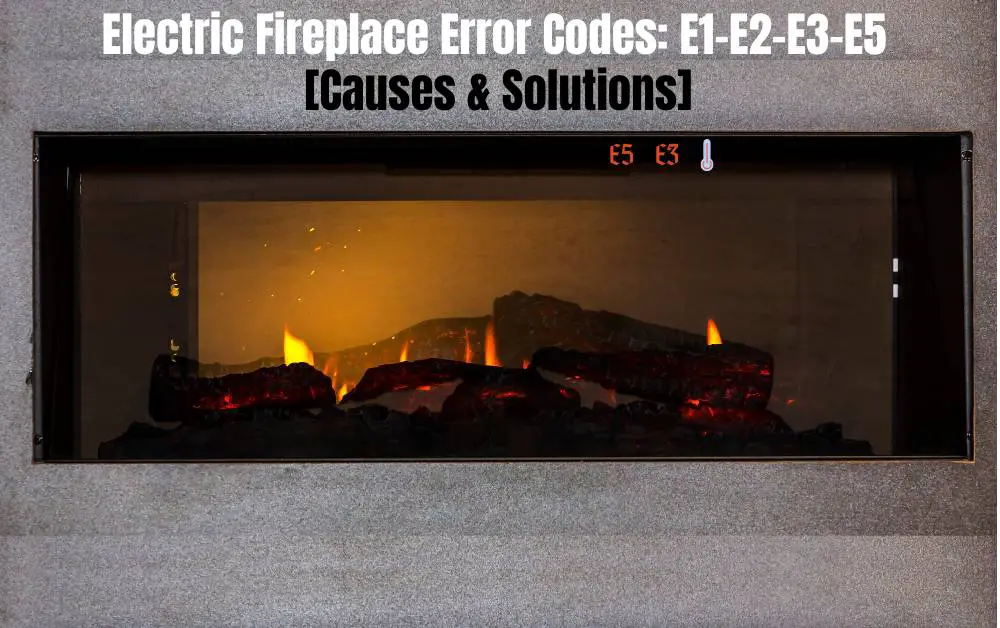Electric fireplaces are increasingly popular for a reason. They’re clean, efficient, easy to install, and let’s be honest—they look pretty great, too. Whether you’re using it to heat a cozy living room or add ambiance to a chilly bedroom, maximizing the efficiency of your electric fireplace can save you money and improve comfort.
But here’s the catch: most people aren’t using theirs to its full potential. From simple tweaks to smarter usage habits, we’re going to dive into the most effective strategies that turn your fireplace into a true energy-saving powerhouse. Ready to warm up without burning through your wallet?
Tip 1: Choose the Right Size and Model
The most important step in using your electric fireplace efficiently starts before you even plug it in. Yep, it’s all about choosing the right size and model for your space. Just like a jacket that’s too big or too small won’t keep you comfortable, a fireplace that’s not appropriately sized will either overwork or underperform.
Start by measuring your room in square feet. A general rule of thumb? A standard electric fireplace can effectively heat about 400 square feet. If your space is larger, you’ll either need a more powerful model or consider using it alongside other heating methods (we’ll get into that later).
On the other hand, using a large unit in a tiny room means wasted energy and potential overheating. Not to mention, it can drive up your electricity bill unnecessarily. So, check the BTU (British Thermal Unit) rating of the fireplace—higher BTUs mean more heat output. Choose wisely based on your room’s dimensions.
Features that Matter: Thermostat, Timer, and Remote
Beyond size, consider features that can significantly boost efficiency. A built-in thermostat helps maintain a steady temperature without overheating. It’ll shut off when the room reaches your set temperature and kick back on when needed—no manual guesswork.
Timers are another great feature, letting you schedule usage and avoid accidentally running the fireplace all night. Want ultimate comfort? Look for models with remote controls or Wi-Fi connectivity. Being able to control your unit from your couch or even while you’re out? That’s next-level efficiency.
Tip 2: Optimize Placement for Better Heat Distribution
Where you put your electric fireplace can make or break its performance. Think of it like setting up a speaker—you wouldn’t stuff it behind a couch and expect crystal-clear sound, right? Same goes for your fireplace and airflow.
Avoid placing furniture or curtains directly in front of or around your unit. They block warm air and can cause uneven heating, forcing the fireplace to work overtime. Plus, that kind of blockage is a potential safety risk—especially if heat vents are located at the bottom or sides.
Keep at least a few feet of clear space around the unit, particularly in front where the heat blows out. This allows the warm air to circulate more freely throughout the room.
Ideal Locations in the Room
Now, about positioning. If you can, install your fireplace on an interior wall rather than an exterior one. Why? Because exterior walls often lose heat faster. Interior placement helps the unit retain warmth and distribute it more evenly.
You’ll also want to place it lower on the wall or near the floor—warm air rises, so starting low helps heat the whole room. Mounting a unit too high (like over a TV) might look sleek, but it’s not the best for practical heat flow.
Corner units are another clever option—they radiate heat outward in multiple directions and often make great use of awkward or unused space.
Tip 3: Seal Drafts and Insulate Your Room
Ever feel like your room gets cold even with the fireplace running? Drafts could be the culprit. No matter how powerful your electric fireplace is, it can’t compete with a room that’s leaking heat like a sieve. Start by checking windows, doors, baseboards, and even electrical outlets.
A simple candle test can help: hold a lit candle near suspected draft areas. If the flame flickers, you’ve found a leak. These little drafts may seem minor, but over time they lead to major energy loss.
Easy DIY Sealing Techniques
Luckily, sealing those leaks doesn’t require a contractor or a big budget. Try weatherstripping around windows and doors—peel-and-stick strips are cheap and effective. Use caulking to seal cracks in baseboards or window frames.
For drafty windows, consider using insulating film during colder months. It’s like putting a clear, invisible sweater on your glass panes. Draft stoppers (those long fabric “snakes” you place at the bottom of doors) are also great, especially for older homes.
Investing a few dollars and an afternoon in sealing up your room can drastically improve how well your electric fireplace performs—and lower your utility bill.
Tip 4: Use the Fireplace’s Built-in Thermostat and Timer
A lot of people treat electric fireplaces like light switches—on when you’re cold, off when you’re not. But using your unit’s built-in thermostat and timer can do a lot of the work for you, saving both energy and money in the process.
Set your fireplace to turn on shortly before you get home from work or before you wake up. That way, you walk into warmth without having to blast the heat suddenly. Conversely, set it to turn off automatically after a certain time, so you don’t accidentally leave it running all night (we’ve all been there).
Avoiding Overuse
More isn’t always better. Keeping your fireplace running at full blast all day might feel cozy, but it’s a guaranteed way to waste electricity. Instead, find the lowest comfortable temperature for your space and let the thermostat handle the rest.
If your fireplace doesn’t have a built-in timer or thermostat, you can still use a smart plug with scheduling capabilities. They’re inexpensive and offer control right from your smartphone. A win-win for convenience and efficiency.
Tip 5: Supplement with Ceiling Fans or Space Heaters Strategically
Here’s a little-known trick: use your ceiling fan on its reverse (clockwise) setting during winter. This pulls cool air up and pushes warm air down, helping circulate heat from your electric fireplace more evenly throughout the room.
It’s a super low-cost way to stretch the warmth without turning up the dial. Even a small oscillating fan placed near the fireplace can help distribute heat more efficiently—just don’t aim it directly at the unit, as that could cool the sensors.
When and Where to Use Additional Heaters
In some situations—especially in larger or oddly-shaped rooms—your electric fireplace might need backup. That’s where space heaters come in. Use them in colder corners or rooms far from the fireplace.
But don’t overdo it. You’re trying to supplement, not double your electric usage. Choose energy-efficient models with safety shut-offs and timers, and make sure they’re placed on a flat, heat-resistant surface.
Tip 6: Regular Maintenance for Peak Performance
Even though electric fireplaces don’t produce smoke or soot like traditional fireplaces, they still require occasional cleaning to perform at their best. Dust buildup on the vents and filters can block airflow, reducing efficiency and causing the unit to work harder than necessary.
Start by turning off the unit and unplugging it—safety first! Then, use a vacuum with a soft brush attachment or a microfiber cloth to clean the intake and exhaust vents. If your unit has a filter (check your model’s manual), remove and wash or replace it as needed. A clean system allows for smoother airflow and better heating power with less energy.
Think of it like changing the air filter in your HVAC system—neglect it, and your unit will waste more power trying to maintain temperature. Do this monthly during heavy use seasons, and you’ll notice improved performance and possibly even a lower electricity bill.
Checking Wiring and Connections
Electrical safety isn’t just a precaution—it’s an efficiency issue too. Loose wiring, faulty plugs, or worn-out cords can lead to poor performance or even a fire hazard. Periodically inspect your fireplace’s power cord for signs of fraying, exposed wires, or overheating.
Make sure the unit is plugged directly into a dedicated outlet—never use extension cords, which can restrict current flow and reduce power efficiency. If your model uses a remote or smart connection, ensure firmware or app updates are installed if needed to avoid glitches that affect performance.
Consider having a licensed electrician check your unit every couple of years if you use it frequently, especially if it’s built-in or wall-mounted. Prevention beats the cost of repair—or replacement—any day.
Tip 7: Use LED Flame-Only Mode for Ambiance Without Heat
One of the best things about electric fireplaces is their aesthetic appeal. That glowing flame effect? Pure ambiance—and with most models, it’s powered by LED lights, not actual heat. This means you can turn on the visual flames without the heater, giving your room that cozy fireplace feel without spending extra on energy.
LEDs use a tiny fraction of the electricity that traditional lighting elements do, and they last much longer too. If it’s a chilly summer night and you just want that flickering glow, flip on flame-only mode and enjoy the vibe guilt-free.
It’s perfect for movie nights, romantic dinners, or just relaxing with a good book. You get all the charm of a fireplace with almost none of the cost.
When to Use This Feature
Use this mode during warmer seasons or when the room is already adequately heated. Got guests over and want to create a welcoming mood? Flip on the flames and keep the heater off. It’s an especially great feature for small homes or apartments where you might not want extra heat but still want the visual appeal.
If you’re hosting, setting the scene with a fire-like glow without raising the temperature can keep everyone comfortable. And since it doesn’t generate real heat, it’s completely safe to leave on longer—just remember to turn it off when not in use to extend the life of the LEDs.
Bonus Tips to Go Even Greener
Pair with a Smart Home System
Want to take your efficiency game to the next level? Pair your electric fireplace with a smart home system like Alexa, Google Home, or Apple HomeKit. Many newer models are Wi-Fi enabled and can be voice-controlled or automated through smart hubs.
This setup lets you program heating schedules, turn the unit off remotely, or even use temperature sensors in different parts of your house to maintain comfort more precisely. For example, set it to only turn on when your room dips below 68°F and shut off once it hits 72°F—no waste, no overheating.
Automation isn’t just cool—it’s incredibly efficient. Plus, it allows for better energy usage tracking, helping you understand exactly when and how you’re consuming electricity.
Solar Power Integration Possibility
If you’re serious about sustainability, consider running your electric fireplace off solar power. No, you don’t have to power your entire home this way—just having a dedicated solar panel and battery for smaller appliances (like your fireplace) can reduce your dependence on the grid.
Some homeowners even install portable solar generators that store solar energy during the day and power devices at night. While it requires an upfront investment, you’ll drastically cut energy costs over time—and you’re doing the environment a huge favor in the process.
Electric fireplaces are already cleaner than burning wood or gas, but pairing them with renewable energy makes your setup nearly carbon-neutral.
You May Also Like To Read:
Affiliate Disclosure: Fireplaceadviser.com is a participant in the Amazon Services LLC Associates Program. We may earn a commission when you click on certain links on this site and purchase.

Hello!! I am Jamal Khan. I often fix my home electric heaters and gas stove problems and research the common issues in the heating units to improve my knowledge and expertise. The aim of establishing fireplaceadviser.com is to share my expertise and knowledge with my audience.












